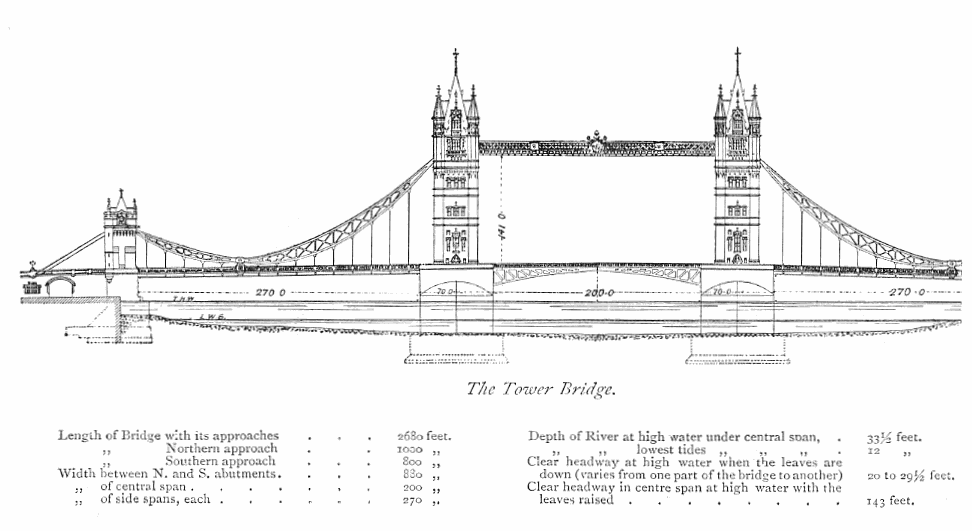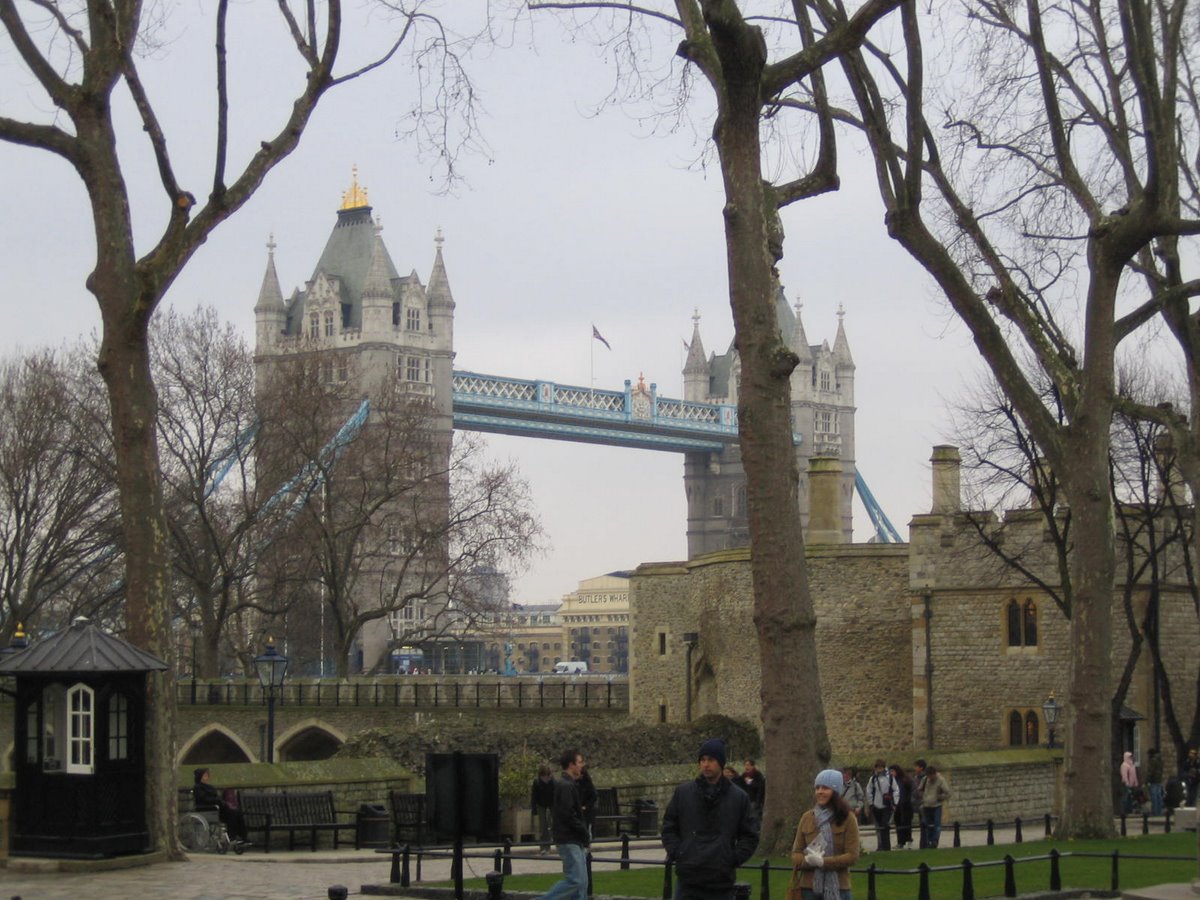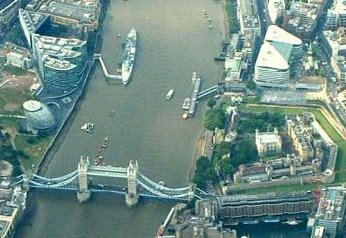Below is one of London's icons: its Tower Bridge (so named after the Tower of London at its northern foot.) This is not the London Bridge (which is the next bridge upstream on the Thames or in Arizona, depending upon your sense of history).
Look closely, it's a drawbridge, in fact, a double-leaf bascule bridge which means it uses huge counterweights that help the 1000-ton spans (or leaves) rise within one minute. The difference in water levels from low/high tide at this point of the Thames is 25 feet and the open drawbridge provides a high-tide clearance of 143 feet below the upper walkway. (For a photo showing the drawbridge open, click here).
Here's an engineering drawing from our friends at Wikipedia showing essentially the drawbridge sandwiched by two suspension bridges each 270 feet long. The intent of the high walkway was to allow pedestrians to continue their journey even while the bridge was raised. (The walkways can be accessed by elevators). However, the time between open-to-shut-again is only 5 minutes and most walkers just wait.
 |
Construction started in 1886 and took 8 years and 14,000 tons of steel, not to mention the decorative Cornish granite and Portland stone. The steel bridge has a cosmetic skin of 31 million bricks to make it somewhat visually compatible with the nearby Tower of London. All this for a million pounds sterling. Here's a photo of the bridge taken from the Tower of London, see if you think the two areas mesh:
 |
Below is another picture of the Tower Bridge and its namesake: the Tower of London moat is in the foreground and its wall on the right. To the left is the approach to the bridge. I'm not sure that blue paint fits the Tower of London color scheme (but, hey, the White Tower isn't white either.)
By an act of Parliament, the bridge was to be built without interfering with boat traffic on one of the world's busiest waterways at that time. (The rise of container shipping in the 1960s wiped out most major shipping from the London Pool). Parliament decreed that a 160 foot width of river be continually available to river traffic, creating a raft of engineering challenges.
On each side of the central drawbridge are 270 foot suspension bridges. Here's a view of those suspension bridges leading up to the twin towers (above and below). The towers rise 293 from the river bottom and now house exhibitions on the bridge's history. Cars get a 35 feet width in the middle and pedestrians get 12.5 feet on each side. In all, 40,000 people cross every day.
At upper left, note the upper walkway, 143 feet above the drawbridge, giving the ships clearance of 140 feet even at high tide. (When closed, a ship has about 39 feet clearance under the span). The bridge opens about 900 times per year.
|
To the right is an aerial view of the bridge (bottom) with the Tower of London (right surrounded by its green moat in the shape of a backwards letter "C") and a couple of other sites such as the blob (at about 9 o'clock position) which is the London city hall, and the battleship (upper center-left). |
 |
|
At left is Norman Foster's City Hall. (He also is know for the "Gherkin" building seen on our tower of London Page and the new Hearst Building in New York City). This ten-storied squashed blob is the logical progression of the "form follows energy conservation" approach of Foster. The bulb shape reduces the surface area (where heating and cooling is lost) relative to a rectangular structure. (It also makes it hard for the mayor to get a corner office, but we're not sure that's a power-saving feature). The slipped disc structure lets each floor shade the windows of the floor below it. |
Below is a view of London's floating museum as seen from the tower: The HMS Belfast. Commissioned in 1939, the Belfast shortly thereafter spent 3 years under repairs after an unfortunate encounter with a German mine. She made up for it by firing on Normandy shores for nearly 5 weeks continuously starting with D-Day while 3 million allies stomped ashore. She later saw action in the Korean war. Retired in 1962, she became a museum in 1971.
![]()
This
work is licensed under a Creative
Commons Attribution-NonCommercial-NoDerivs 2.5 License.